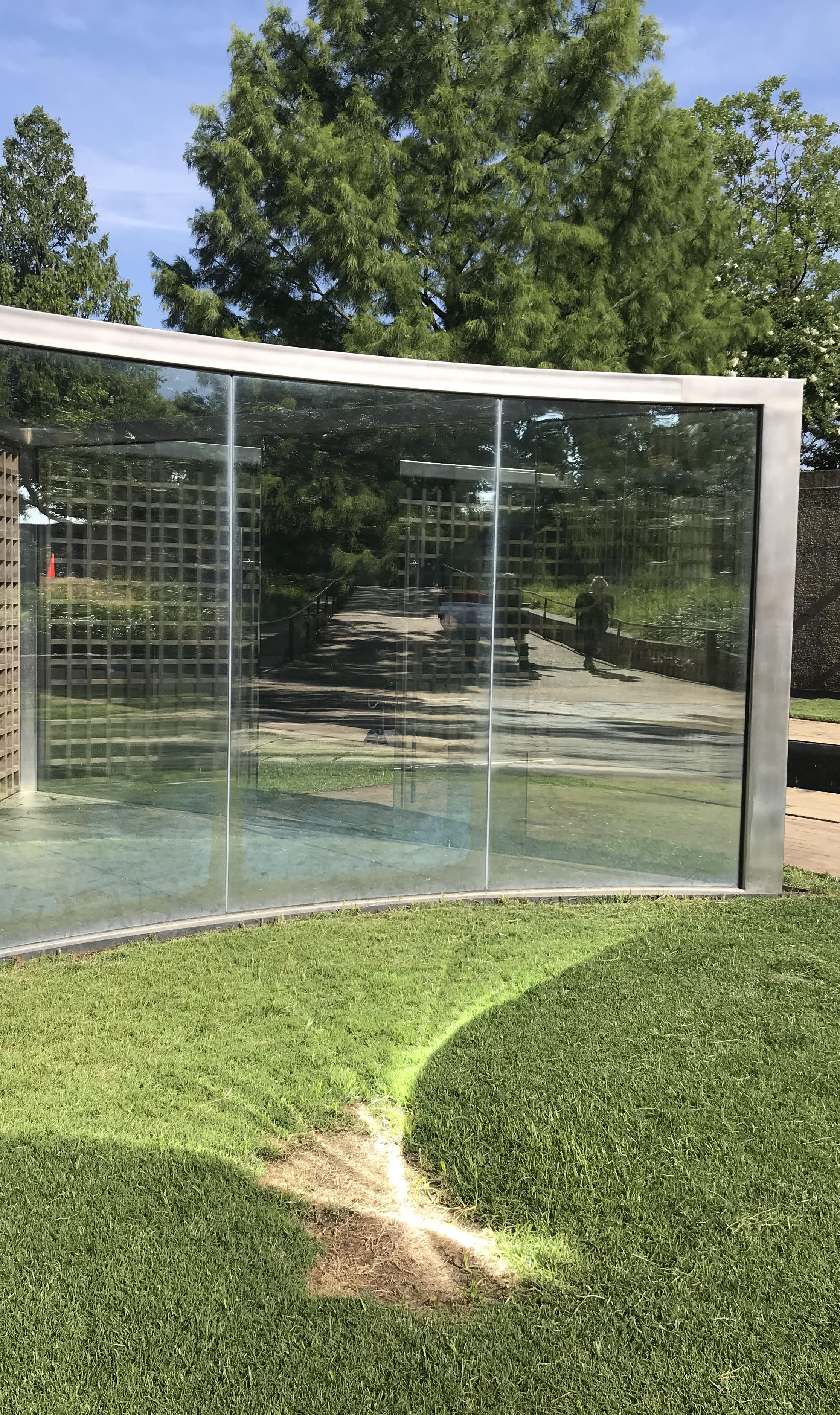
The work shown here was completed by American artist Dan Graham and entitled To Gordon Bunshaft — the architect of the Hirshhorn Museum. The work was conceived in 2006 and fabricated in 2007–
2008 when the site-specific work was acquired by the museum. The work consists of three walls that forms a central triangular space that visitors can enter. One slightly curved wall is constructed of reflective glass — intended to celebrate modern corporate architecture and Bunshaft’s design. The second wall is a wood lattice derived from traditional Japanese architecture. The third side looks like a typical commercial building entrance with a set of double glass doors.
Graham is considered a key player in the development of conceptual art. The work provides the viewer with a dynamic visual experience with multiple reflections and transparencies composed by the shape, placement and material of the three walls. What I found most interesting was perhaps an unintended result of this work. The curved glass wall faces south and as a result focuses the sun’s energy on a small area, resulting in a dead spot in the grass fronting the sculpture.
This reminded me of the time I was contacted by the media to comment on the “death ray.”
The death ray was caused by the curved façade of the 57-floor Vdara Hotel at the City Center resort on the Las Vegas Strip. The sun was magnified and focused on a small spot in the pool area. The death ray reportedly melted cups, burned guests and raised the temperature of the pool area by 20 degrees. After some inquiry, the architects assured me that this phenomenon was a known condition and modeled prior to construction. Their solution? Place a film on the glass to reduce the effect. When I was asked what they should do, I told them to turn a negative into a positive. Use the focused heat as fuel for a solar oven that could bake bread for the growing homeless population in Las Vegas. They did not find my suggestion humorous and opted for a shade structure instead.
